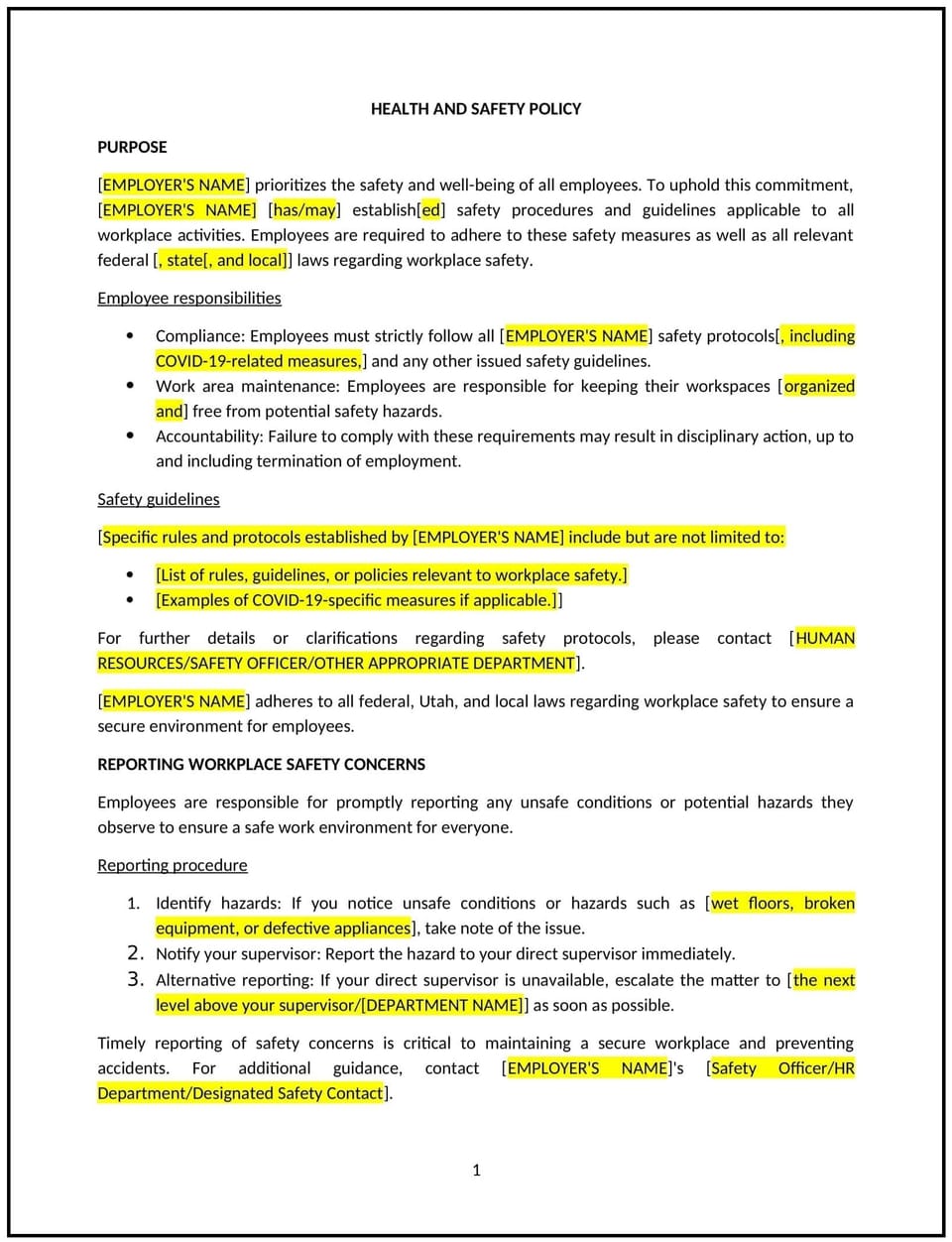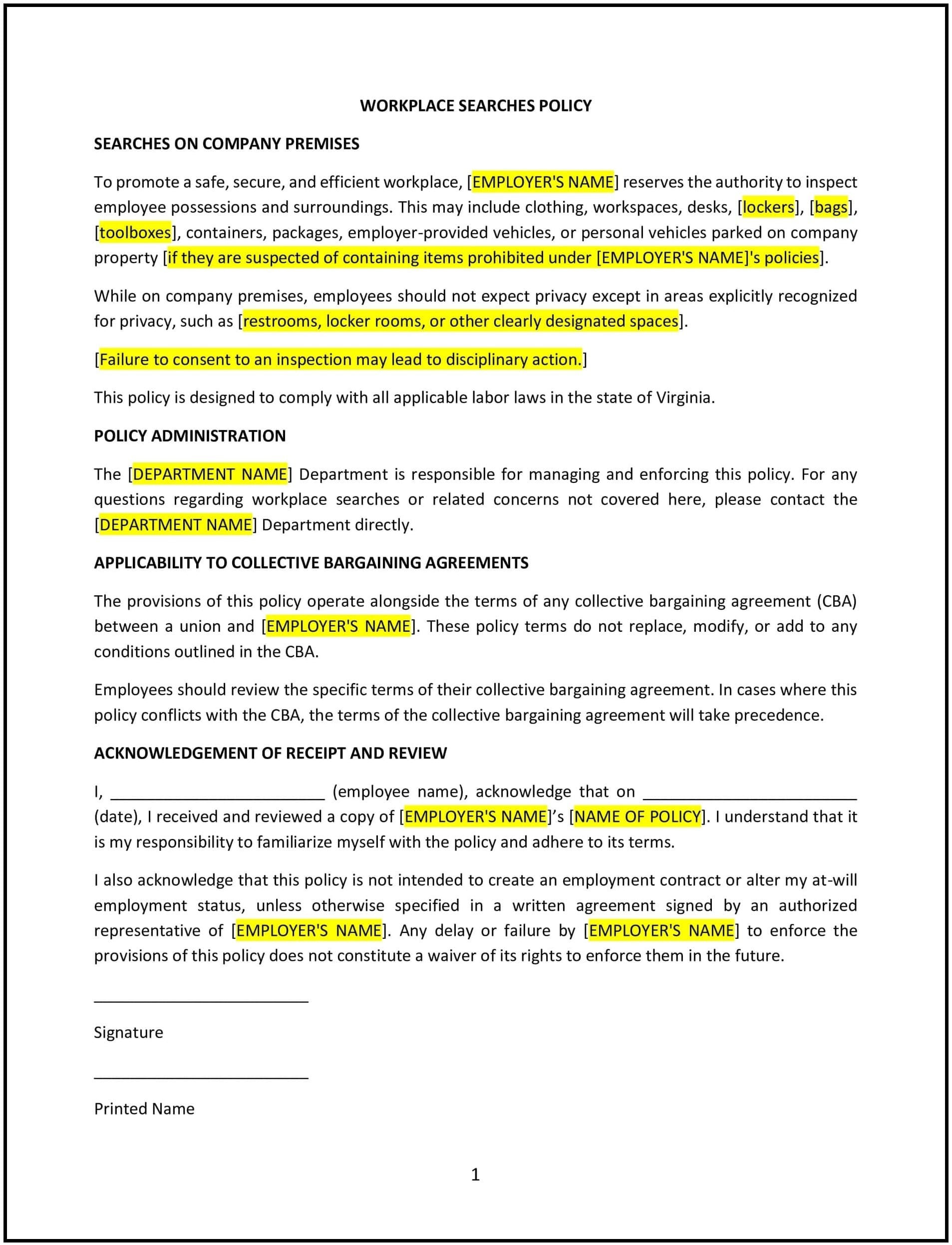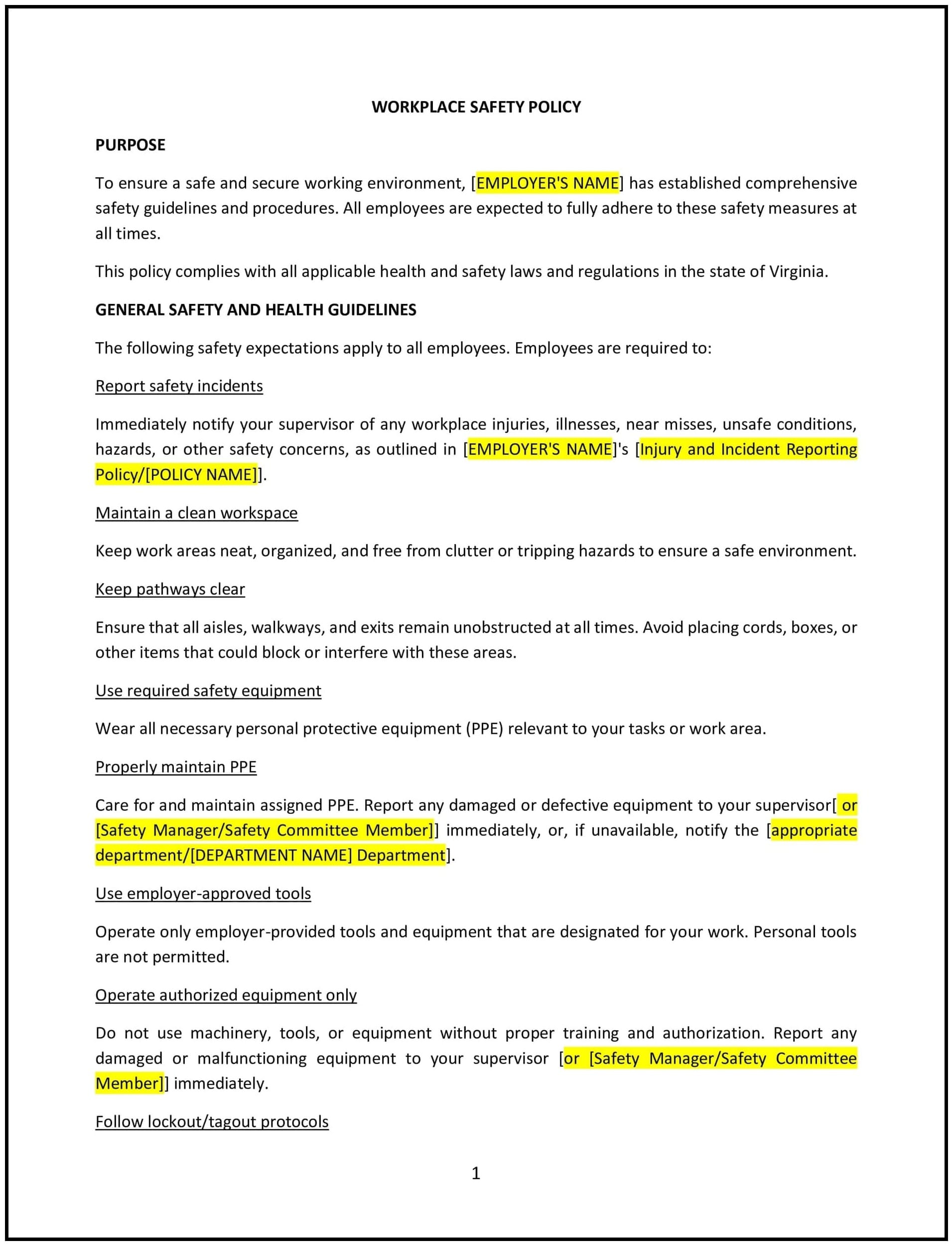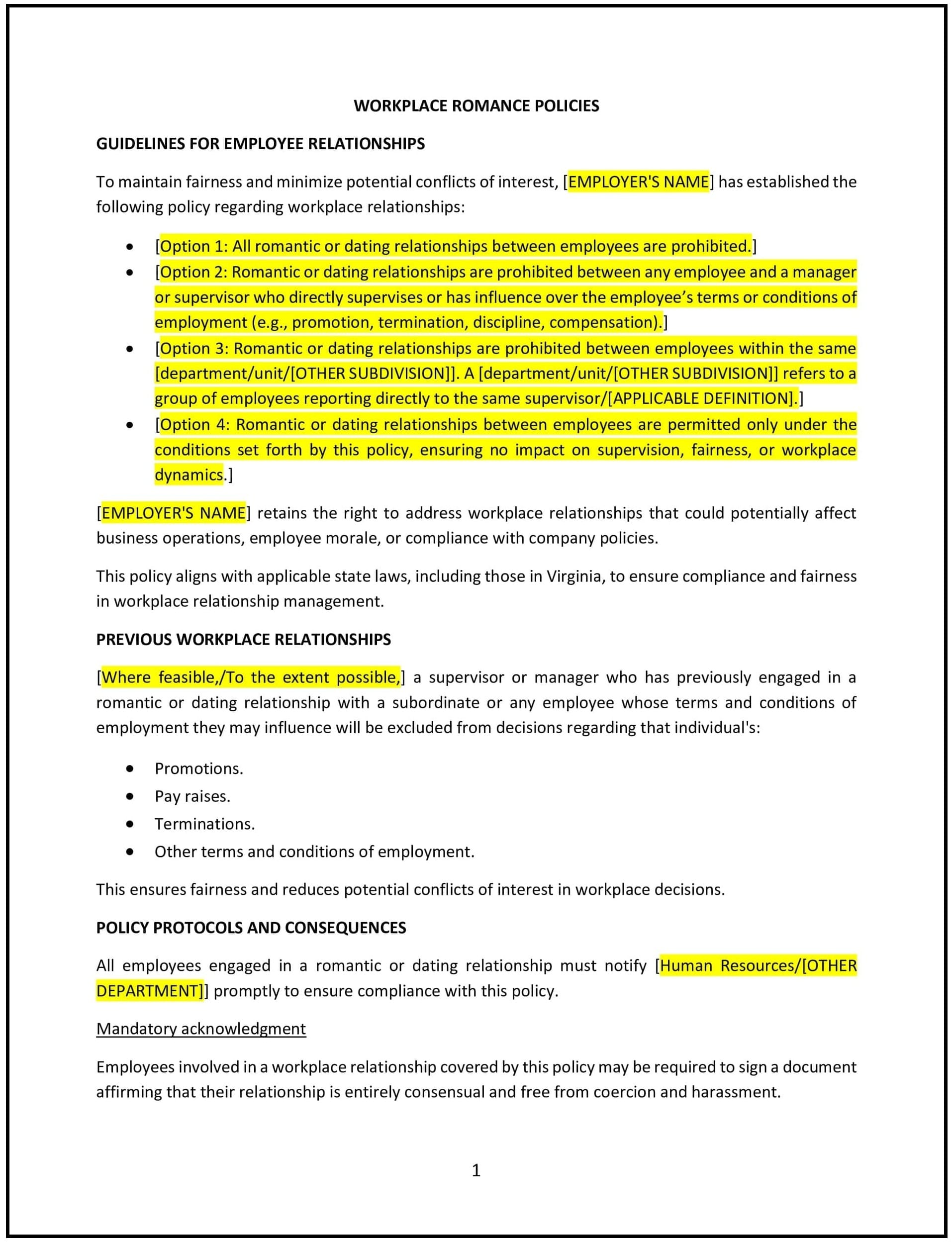Health and safety policy (Utah): Free template

Health and safety policy (Utah)
This health and safety policy is designed to help Utah businesses establish guidelines for maintaining a safe and healthy work environment. It outlines procedures for identifying hazards, preventing accidents, and responding to emergencies.
By adopting this policy, businesses can protect employees, reduce workplace risks, and align with general best practices for workplace safety.
How to use this health and safety policy (Utah)
- Define safety principles: Explain the business’s commitment to maintaining a safe and healthy work environment.
- Identify hazards: Conduct regular risk assessments to identify potential hazards in the workplace.
- Implement safety measures: Provide guidelines for preventing accidents, such as safety training, protective equipment, and ergonomic practices.
- Address emergencies: Outline procedures for responding to emergencies, such as fires, medical incidents, or natural disasters.
- Train employees: Educate employees on safety protocols, emergency procedures, and their roles in maintaining a safe workplace.
- Monitor compliance: Regularly review workplace practices to ensure adherence to the policy.
- Review and update: Assess the policy annually to ensure it aligns with evolving safety standards and business needs.
Benefits of using this health and safety policy (Utah)
This policy offers several advantages for Utah businesses:
- Protects employees: Ensures the safety and well-being of employees in the workplace.
- Reduces risks: Minimizes the potential for accidents, injuries, or illnesses.
- Aligns with best practices: Provides a structured approach to managing workplace safety.
- Enhances productivity: Creates a safe environment where employees can work efficiently.
- Reduces legal risks: Helps businesses comply with federal and state safety regulations.
Tips for using this health and safety policy (Utah)
- Communicate the policy: Share the policy with employees and include it in the employee handbook.
- Provide training: Educate employees on safety protocols, emergency procedures, and their roles in maintaining a safe workplace.
- Monitor compliance: Regularly review workplace practices to ensure adherence to the policy.
- Address issues promptly: Take corrective action if safety hazards or violations are identified.
- Update regularly: Assess the policy annually to ensure it aligns with evolving safety standards and business needs.
Q: How does this policy benefit businesses?
A: By maintaining a safe and healthy work environment, businesses can protect employees, reduce risks, and enhance productivity.
Q: What types of hazards should businesses address?
A: Hazards may include physical risks, chemical exposures, ergonomic issues, or fire hazards, depending on the workplace.
Q: How can businesses ensure employees follow safety protocols?
A: Businesses should provide regular training, monitor compliance, and enforce consequences for violations.
Q: What should businesses do if an accident occurs?
A: Businesses should follow emergency procedures, provide medical assistance, and investigate the cause of the accident to prevent future incidents.
Q: How often should businesses review this policy?
A: Businesses should review the policy annually or as needed to ensure it aligns with evolving safety standards and business needs.
This article contains general legal information and does not contain legal advice. Cobrief is not a law firm or a substitute for an attorney or law firm. The law is complex and changes often. For legal advice, please ask a lawyer.


